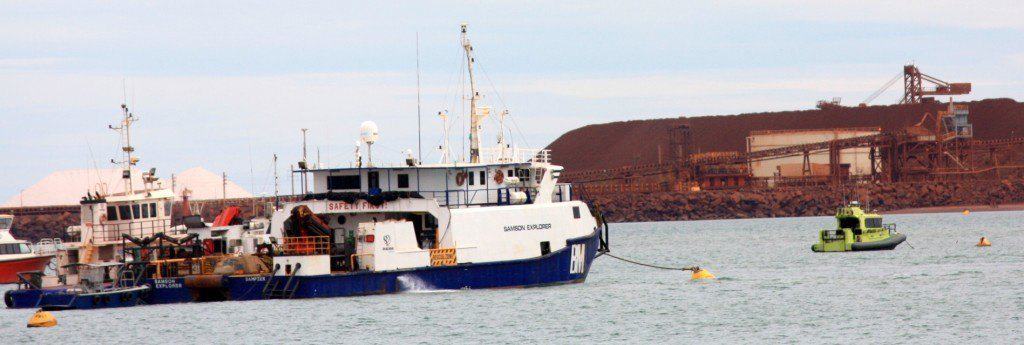INCIDENTS AT SEA
While teaching in the Karratha/Dampier area for the last two weeks the wind has been difficult to work with, although fortunately on the most extreme day of 40 knot plus gusts I had no classes. During this time I have chatted with clients about their boating background and some interesting stories have come to light that are worth sharing. Remember that it was only four years ago that the Pilbara region held the distinction of being the highest boating population per capita in Western Australia, although now apparently it has been surpassed by Mandurah.
The first story that came to light involved families heading out for a weekend of boating off the Dampier Archipelago. When one of the boats with three guys on board did not return, there was initial concern, but the alarm was not immediately raised as they had been known to fish later into the evening when conditions were favourable. Unfortunately the vessel had run aground at speed and the three men were seriously injured. One of them had grabbed the EPIRB and lifejacket, but was struggling to make it onto the island. He believed the EPIRB was a water activated model and so made the decision to discard it in favour of the life jacket. Unfortunately this was not the case and although the incident occurred in the evening, the men were not recovered until 730am the next morning with various injuries including a broken leg, serious head wound and loss of blood from numerous cuts and abrasions. I used to sell water activated EPIRBs and it is important to note for these models that the water activation mode was only initiated once the EPIRB was removed from it’s bracket. This prevented it being activated during a boat wash down or even during periods of rain. Over the years some brands were accidentally activating, so I have stayed with the manually operated versions. The importance of everyone on board knowing where the safety gear is and how it works is critical, especially for extended trips.
In the other incident a skipper had diligently marked waypoints where the commercial mooring buoys were positioned on his way out, as he was intending to return at night. While motoring back at speed his vessel slammed into one of the marked buoys, tearing a hole in the hull and injuring the crew. He continued on to the jetty to enable the water to venturi out of the vessel, but once stationary the vessel sank immediately. Unfortunately he had not accounted for the fact that some of these moorings were for very large vessels and so were holding long riser chain connected to the anchor points below. Therefore, in any extreme tidal or wind condition the mooring location could vary up to 40 metres.
Night time boating raises many extra issues and should be carried out with extreme caution. I know many seasoned boaties who have never ventured out at night because they are not comfortable with the increased risks. These include poor visibility, the need to fully understand and rely on your electronics as well as the increased incidence of sea sickness. As a minimum, definitely pays to have an intimate knowledge of the area, wear a PFD and drop your speed.
To answer last week’s question, the North West Gas Shelf Project is situated on the Burrup Peninsula. This week’s question is, ‘Where in Australia does an activated EPIRB send the signal to?’
0409549356
Find us on seasoaringmarine

